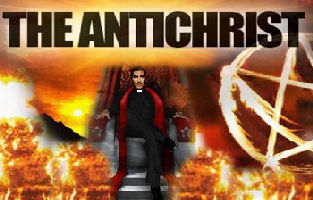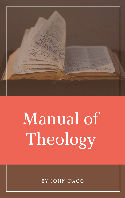Scientology: Religion of the Stars – A Christian Perspective Don Closson gives an overview of the Church of Scientology and its founder, L. Ron Hubbard, from a biblical perspective, including analysis of why it is incompatible with Christianity.
This is a single chapter article on Scientology by Probe.org Don Closson.
Depending on your perspective, Scientology was either discovered or invented by the successful pulp and science fiction writer L. Ron Hubbard. He and his followers claimed to have uncovered deep secrets of the mind and spirit. But while adherents say Hubbard’s discoveries can eradicate most of what ails humanity, critics argue that Hubbard invented a new religion with the same creative mind that fashioned popular works of science fiction. Hubbard’s critics add that this new religion was formulated to make its founder and close associates very wealthy.
The details of Hubbard’s life are highly contentious. The Church of Scientology offers a version that is remarkable in every way. According to the Church, Hubbard was studying Shakespeare and Greek philosophy soon after he learned to read. By age six, he had become a blood brother of the Blackfoot Indians and had learned their tribal secrets and legends, an honor that supposedly few white men could claim. The Church of Scientology also maintains that he became the youngest Eagle Scout ever, and by age nineteen had traveled over a quarter of a million miles to China, Japan, Guam, the Philippines, and other countries.{1} By his late teens they claim that he had absorbed the philosophies of the East. These facts are questioned by Hubbard’s critics, who have posted their counter-evidence on the Web and in published materials.
The Church claims that Hubbard combined his unique background with personal research that resulted in a manuscript titled “The Original Thesis” which laid the foundation for his book Dianetics: The Modern Science of Mental Health, published in 1950. This work sold over 150,000 copies that year alone and continues to sell well today. In 1953, Hubbard founded the first Church of Scientology in Camden, New Jersey, and eventually planted churches around the world. In 1967, he appointed himself Commodore of a small fleet of ships from which he managed his empire while sailing the Mediterranean Sea. He returned to science fiction writing near the end of his life, publishing bestsellers Battlefield Earth and the enormous Mission Earth series.
Hubbard taught that the principles in Dianetics could do more for the common man than all the traditional psychological theories and therapies combined. Understandably, the American Psychological Association became alarmed. When challenged, Hubbard and his organization would sue health care professionals and anyone else who questioned their auditing therapy. Those who questioned the movement from the inside were labeled “Suppressive Persons,” and were punished and driven from the Church.
The Worldview of Scientology: Cosmology
Scientology claims that its belief system does not conflict with the beliefs of Christianity. However, upon investigation, the religion holds fundamental propositions about reality that create an impassible gulf between the two worldviews. If one accepts L. Ron Hubbard’s view of the cosmos, it will impact every other worldview component. Scientology has unique beliefs about the nature of humanity, ethics, what happens at death, the direction of history, and even how we come to know what is true. These beliefs reveal differences that are not just surface issues; they go to the heart of our existence as human beings.
Scientology assures us that it leaves the nature of God or a supreme being undefined so that it is open to people of various faith traditions. However, it does make claims about the origin of the cosmos we live in and how things have gotten the way they are. In fact, these ideas have much in common with Gnosticism. It appears that L. Ron Hubbard, the founder of Scientology, was both aware of this ancient belief system and added original features to it in coming up with a new story of human origins.
Gnosticism competed with the early Christian church and was written about and refuted by church leaders. It combined ideas from Jewish, Christian, and pagan sources, and taught that the material universe is a mistake; in fact, it is evil. Its focus was on enlightened individuals who came to see this physical world for the illusion and mistake that it really is. By discovering secret knowledge, this person would lead others to the truth and eventually help them to transcend the trap of this earthly prison. Hubbard claimed to have been one of these enlightened people and that he had acquired knowledge that no other person has ever possessed, calling himself a “celestial mediator.”
Hubbard used the acronym MEST to represent the material, energy, space, and time of our universe. He argued that MEST is the product or projection of a vast number of spirit creatures called thetans who became bored with a non-material existence and decided to emanate a universe to play in. Over a long period of time, these thetans forgot that this reality, this universe, is a product of their own design, and they began to perceive it as being real.
According to Hubbard, this “agreed upon” reality is not the product of a self-existing creator God who exists outside the cosmos as the Judeo-Christian worldview teaches, but is instead an illusion and a barrier to overcome in order to advance as an individual. Much like Hinduism and Buddhism, Scientology finds that the reality in which we dwell is part of our problem instead of a gift from a holy God. This belief alone should be enough to keep Christians from trusting in the gospel according to Hubbard.
The Worldview of Scientology: Human Nature
Hubbard claimed to have mastered Eastern thinking at an early age, so it is not surprising that his view of human nature borrows from Hindu and Buddhist thought. Much like Vedanta Hinduism, Scientology teaches that the only real component of humanity is an inner spirit being or spiritual spark. According to Hubbard, our minds are just a database of pictures or a conduit for the spirit, and that our bodies, along with the rest of the cosmos, are only imagined and are a hindrance to discovering the truth about our real nature.
Scientology teaches that this inner spirit being is a thetan that is both “good” and “divine.” It is a being of infinite creative potential that projects or creates the universe in partnership with all other thetans. Thetans are immortal creatures who dwell in illusionary physical bodies, but over time have become confused and now believe that their physical bodies are real.
According to Scientologists, thetans who have not benefited from the practices of Scientology are trapped in a reactive state of mind and cannot operate normally. In this state, humans are more like conditioned machines rather than individuals with a free will. Even worse, they have collected negative experiences called engrams as they have migrated again and again into new bodies in a never-ending cycle of reincarnation. Each of these engrams must be tracked down by a trained Church of Scientology auditor and removed before a person can advance to a healthier mental state.
Once freed by the practices of Scientology, the thetan within is promised increased freedom, intelligence and even spiritual powers. This increased capacity is claimed by many who have been “cleared” through auditing. Church publications make no guarantee regarding the results of auditing, but they do say that “auditing techniques work 100 percent of the time if they are applied correctly.”{2}
According to Hubbard, the problems facing humanity are educational rather than moral; a lack of training, not rebellion against a holy God. We are not morally deficient, but instead ignorant of our true nature. Our only “fall” is our belief that we are primarily physical beings rather than spiritual entities.
Scientology offers us a plan for self-improvement; through hard work and applying Hubbard’s discoveries, anyone can reach a god-like existence. Through successful auditing, you too can become an OT or Operating Thetan, and wear Scientology’s OT bracelet, a sign that you have reached “total spiritual independence and serenity.”{3}
This is directly in conflict with the message of Christianity, which states that our problem is a moral one, and the only solution is accepting the gift of forgiveness provided by Christ’s death on the cross.
Scientology and Knowledge
Hubbard was enthralled by creative people and the creative process. As a successful screen and science fiction writer, he placed the artist at the pinnacle of culture. He wrote that “A culture is only as great as its dreams, and its dreams are dreamed by artists.”{4} His stated desire was to better the entire culture by improving the lives of its most creative thinkers. As a result, the Church of Scientology built Celebrity Centers around the world for the special needs of artists and celebrities. Here, celebrities can go through the necessary process of auditing to clear themselves of negative engrams that are provided by the Church, while in an environment that keeps fans and the paparazzi at a distance. Artists are also highlighted in Scientology’s publications, and celebrity Church members Tom Cruise, Kirstie Alley, and John Travolta are all outspoken proselytizers for the church.
To read the rest of the article, please go to the original source here, https://probe.org/scientology-religion-of-the-stars/.
Closson Scientology: Religion of the Stars – A Christian Perspective
More of our articles on Scientology



 Anthology on the Antichrist
Anthology on the Antichrist
